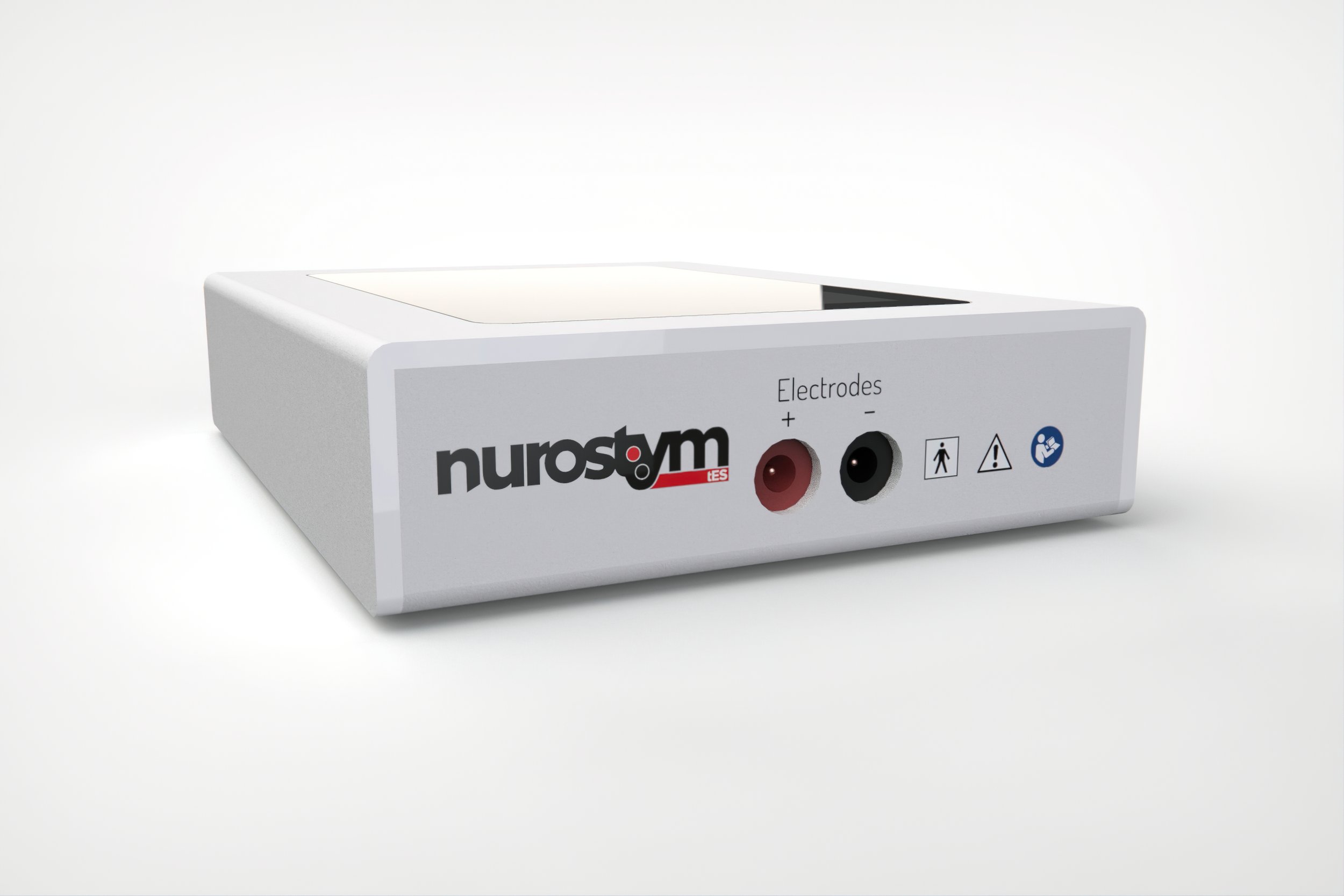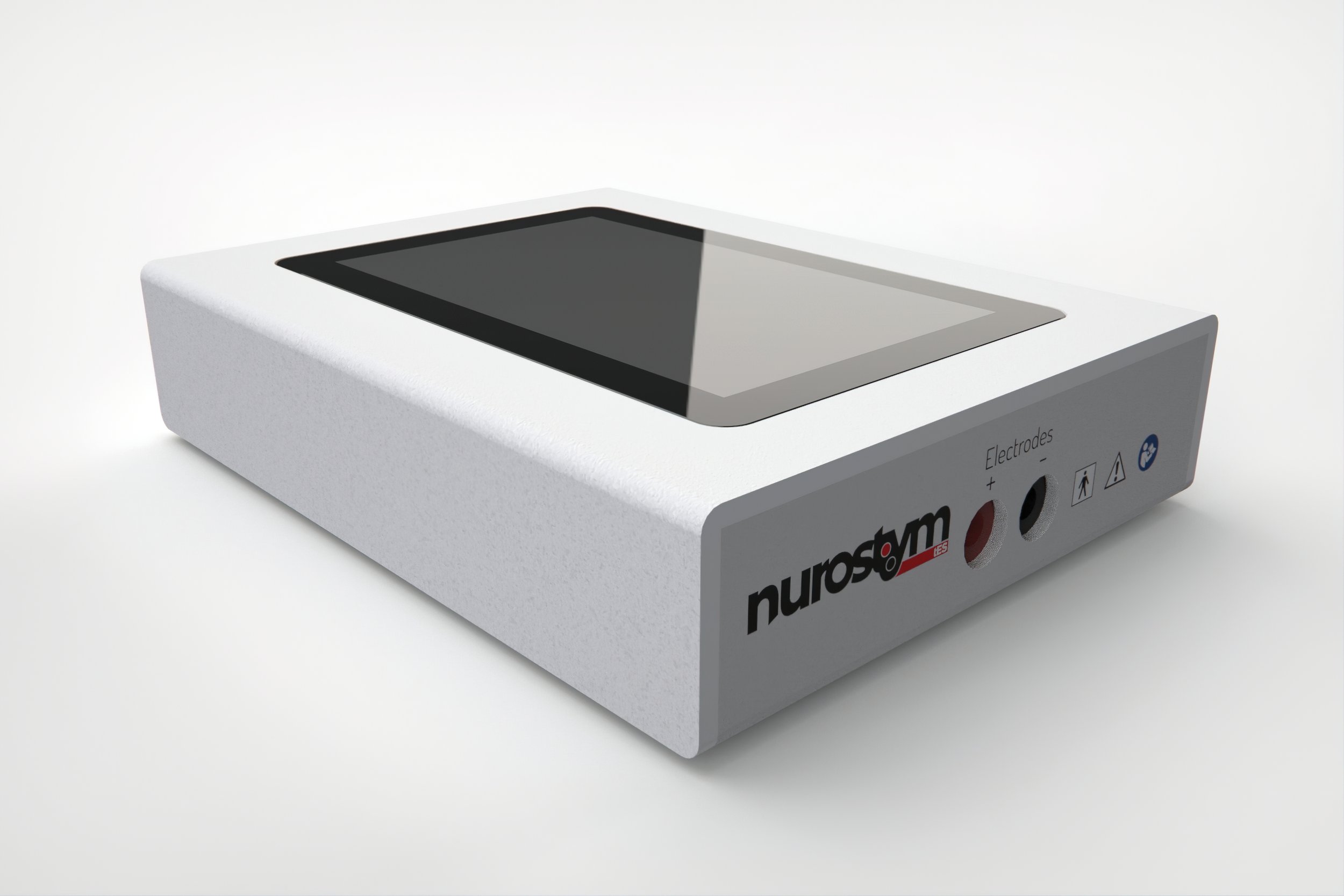Make it stand out
Whatever it is, the way you tell your story online can make all the difference.
Nurostym tES is a complete solution for transcranial electrical stimulation (tES), operating in modes tDCS, tACS, tRNS, AM-tACS and pulse mode. It is an innovative research device of the highest quality and with above-average parameters.
Setting a new standard in tES, nurostym tES offers complete flexibility in study design and the ability to standardise study replication; giving the researcher the opportunity to conduct even more complex experiments.

Leading-edge
functionality
Specifically designed to meet the exacting needs of the researcher, this device has built-in as standard everything you need to carry out tES research.
An easily integrated tES device with full control over stimulation parameters, programmable protocols, sham and double-blind control and advanced safety functions are just some of the leading-edge features of the device, the presence of which in scientific research are indispensable.
Unique touchscreen interface
Nurostym tES is the only system available with a complete touchscreen interface. Its simple navigation and numerical keypad makes programming stimulation protocols quick and simple. When using a USB connector, nurostym tES can also be programmed via computer application.

Custom MR-Compatible Solutions
Customised MR-compatible stimulation cables are now available for 1, 3 and 7 Tesla scanners. Connection is achieved through the filter panel of your Scanner, typically through a DB-9 connecter. Speak to a product specialist today about adding MR compatibility to your nurostym.
Integrate with multimodal solutions
Nurostym tES has a high degree of connectivity with external triggering options built in. Whether you're triggering from MATLAB (or similar) or from an external device.
The in-built digital inputs/outputs and the ability to integrate the communication protocol with external software gives you the widest range of options available to you.

Proprietary Computer Application
All aspects of stimulation can be configured and controlled from the proprietary Windows computer application.
Custom stimulation paradigms can be generated and saved to one of the eight preset windows available on the nurostym device or delivered via the stimulator as normal. Back-to-back protocols can also be arranged for more complex research studies and cued.
Additionally, trigger modes are organised via a special window, enabling the user to either Start and/or stop stimulation via a trigger In, or configure more via the trigger option. Complex triggers out.
The nurostym app serves as the portal to download stimulation logs and perform software/firmware updates when available.
Advanced Impedance Control
Circuits with high levels of impedance can lead to a participant reporting uncomfortable sensations during stimulation.
In an effort to allow the user to control for this, a multi stage alarm and cut-off has been implemented in the nurostym. An alarm can be sounded when a certain impedance level is reached, enabling an intervention to be made to lower it. A second stage can also be implemented where the device will perform a safe termination of stimulation should the impedance reach a second level.
The nurostym is hardware limited to a maximum of 50kOhm.
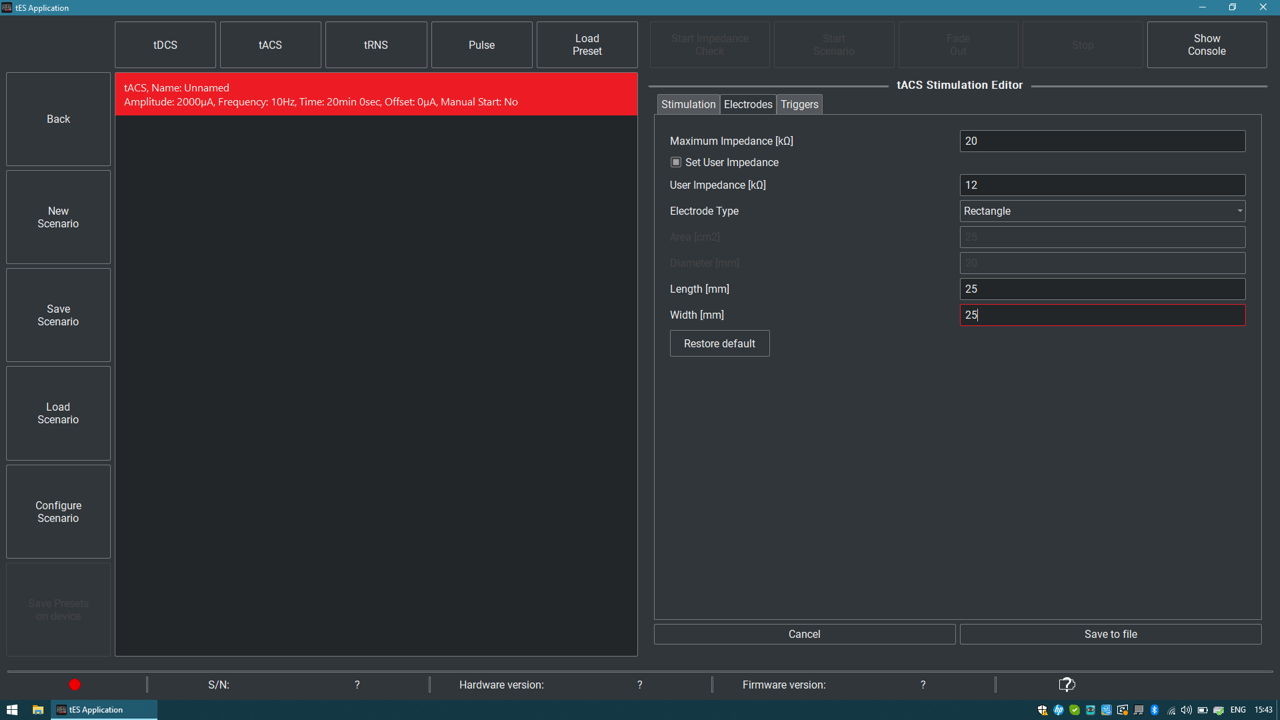
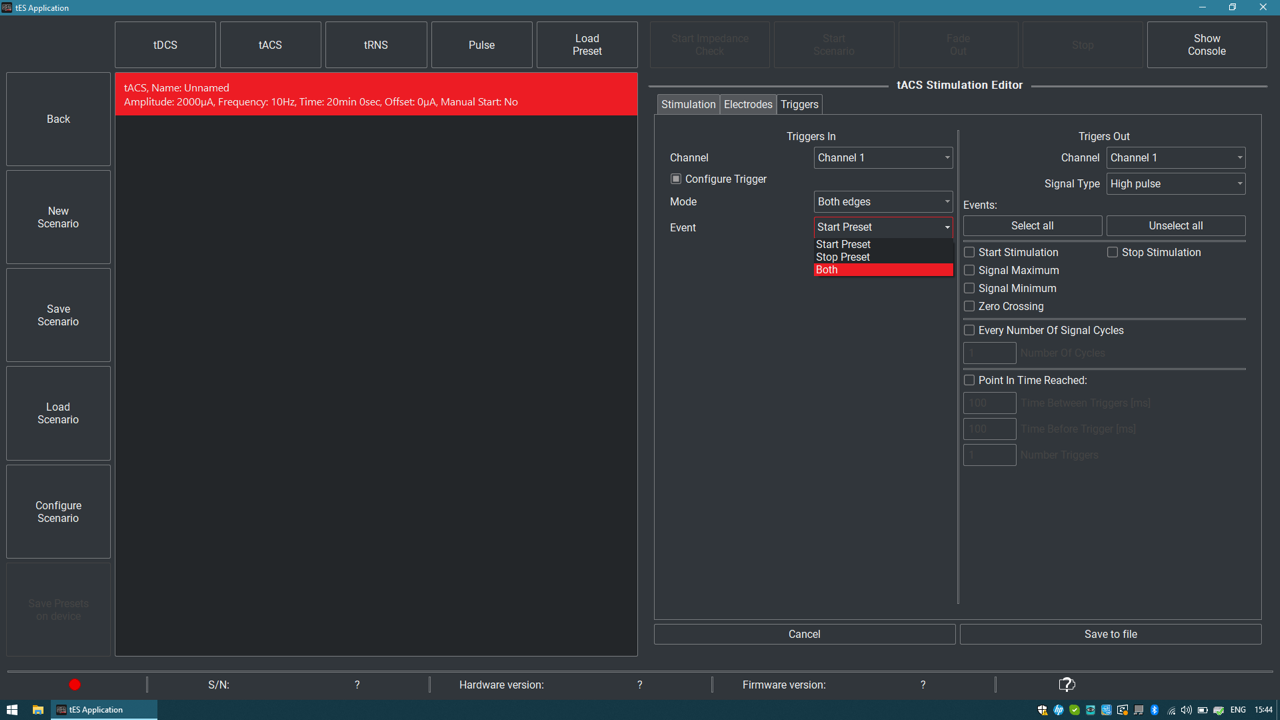
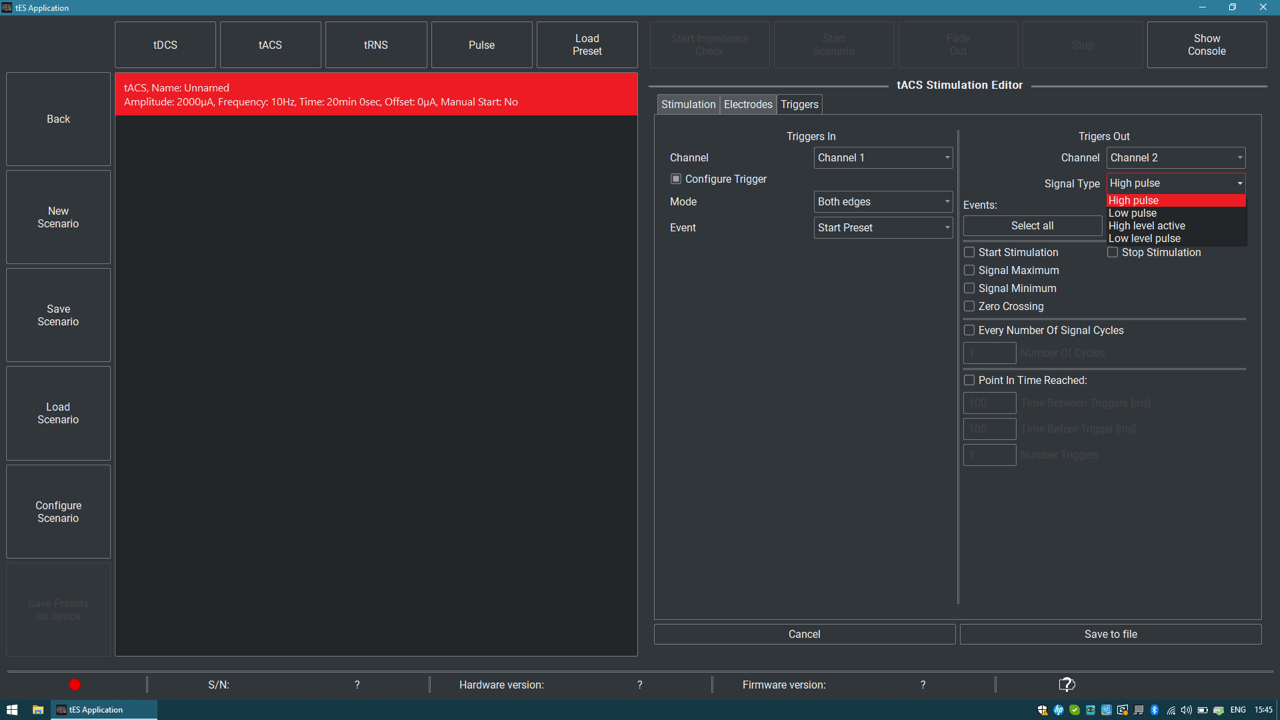
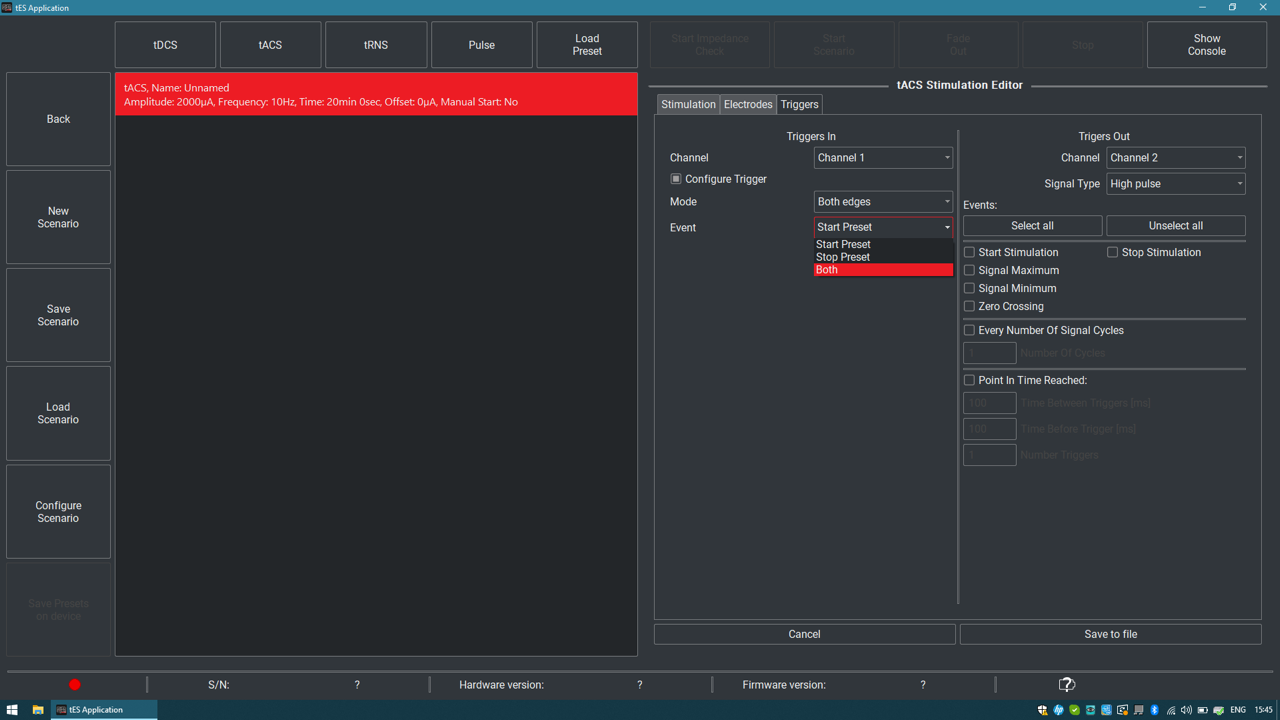
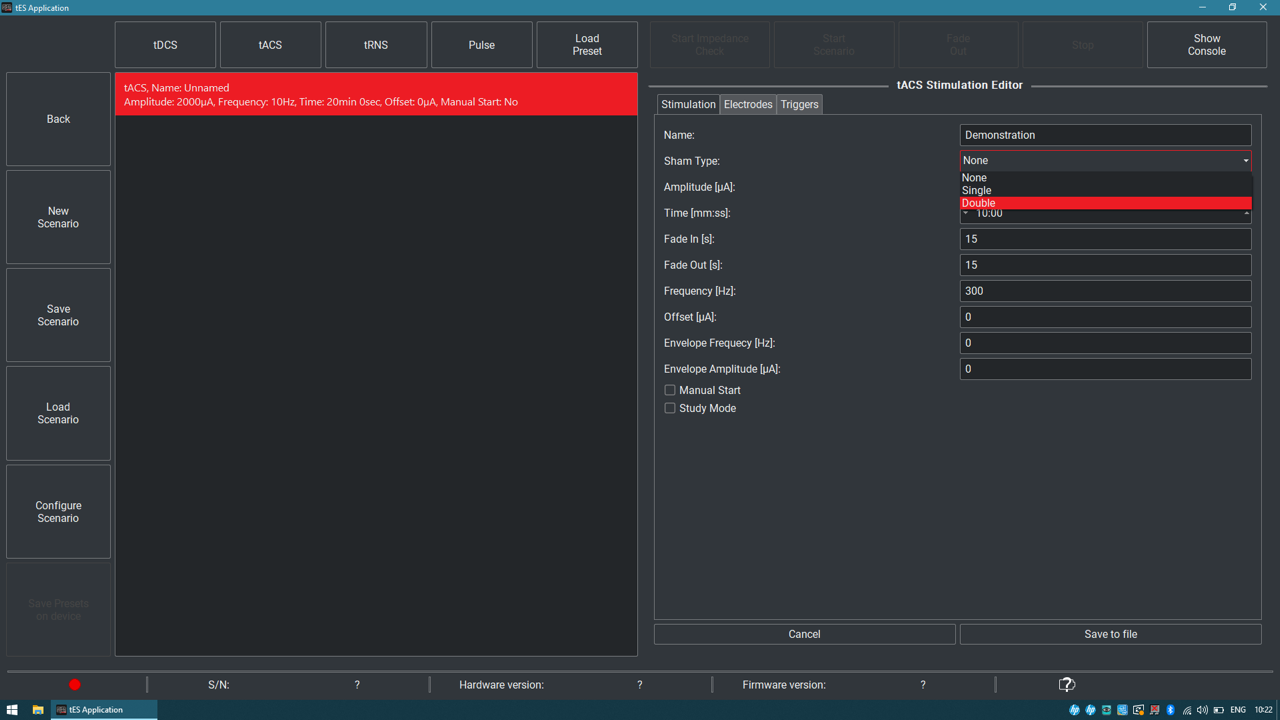

Advanced Safety
Features
Nurostym tES has two key safety features:
Safe-Stop prevents unpleasant shocks caused by latent current when the stimulation stops abruptly, therefore, ensuring a safer and more comfortable experience.
The Security Alarm is a staged and programmable alarm system that provides an audio and visual alarm at the moment of impedance change. Researchers are then able to make necessary corrections during the session and adapt to the conditions of the experiment
Automatic Calculation of Current Density
In the set-up of a stimulation paradigm, the user has the option to input the size of electrodes that are due to be used. This allows the nurostym to perform a current density calculation and advise the researcher if the current due to be delivered my cause an uncomfortable sensation, or adverse event to the participant. For research applications, the option to ignore electrode size is available.
Double Blind and Sham Control
Double-blind (study mode) and sham control are easy to apply using one of 30 5-digit numerical codes (more codes available if required) so that only the study manager can change the parameters.
These important features, needed for complex experiments come as standard on nurostym tES so that you can reliably start your study as efficiently as possible.

Accessories and
Interfaces
nurostym INTERFACE (IO Box)
With 7 BNC connections, a 15pin D-Type connector and three touchproof connections, the added functionality generated by the new INTERFACE module makes the nurostym truly unrivalled in flexible stimulation options.
5 BNC ports are given to the triggers, (two in, three out), 2 BNC ports are given to analogue connections. Analogue in allows the nurostym to receive arbitrary waveforms from a 3rd party, and analogue out allows a 3rd party to receive the signal outputted by the stimulator at a conversion rate of 0.5V/mA.
Alternatively, three touchproof connectors (DIN 42802), with two complimentary signals of 2.5mV/mA and -2.5mV/mA and a ground supply the signal in a lower voltage format, better suited for artefact rejection in EEG recordings.
nurostym SPLITTER
For acomplishing multi channel stimulation montages from a single channel device, the new SPLITTER module allows the user to enable up to 4 return channels of stimulation with a single active channel.
Typically a user would assume a relatively even distribution of current across 4 channels, with the inclusion of a switch for each channel, users of the nurostym can accurately measure impedance levels on each channel. Similar recordings of impedance on each channel equal a reliable distribution of current across the stimulation montage. Available as standard with the nurostym
PRESETS
Save or load up to eight presets onto the device for quick set up times. These presets can either be protocols which are most used, or in a study which is double blind controlled. Parameters can be hidden via the ‘Study Mode’ option, so a user is not aware of either the type of stimulation being delivered, or whether or not stimulation is active or sham.

Triggering Modes
Easy Mode
Restricts the usage of the stimulator to operate only in pre-defined conditions. Easy Mode requires a device-specific pin to enable/disable. It is envisaged Easy Mode should be used in situations where a patient may wish to use the device personally. Conditions loaded to the device by a medical professional can be delivered safely at home.
Complex Triggering
Configured in the nurostym computer application, the stimulator has five different trigger channels. Two Trigger-In channels can be configured to start, stop or do both on the rising and falling edge of a pulse. Trigger-Out options are more numerous & complex. As well as being able to trigger on the High & Low levels of stimulation, the nurostym can send triggers out every time the polarity changes, any time the maximum and/or minimum peak of a sinusoidal wave is reached or when a notified number of cycles has been performed (during tACS).
Source: Witkowski et al (2016) Mapping entrained brain oscillations during transcranial alternating current stimulation (tACS)
Amplitude modulated tACS
(AM-tACS)
The nurostym tES is also capable of delivering AM-tACS; a new brain stimulation protocol that provides additional parameters of a sinewave that can also be used to probe the causal relevance of brain oscillations to neural transmission and behaviour. The carrier frequency is similar to the sinewave used in classical tACS paradigms.
The amplitude modulation feature in nurostym tES enables the amplitude of the carrier frequency to change to another frequency known as the envelope frequency. There are a number of applications and benefits for the use of AM-tACS. Click here to read the AM-tACS primer for more information.

Additional features
Automatic calibration of current density for a defined electrode surface area.
Protocol management. The ability to store 8 predefined protocols, removing the need to reprogramme each time you come to your study.
Up to 10hrs stimulation time. Stimulate more times in a day with long battery life.




